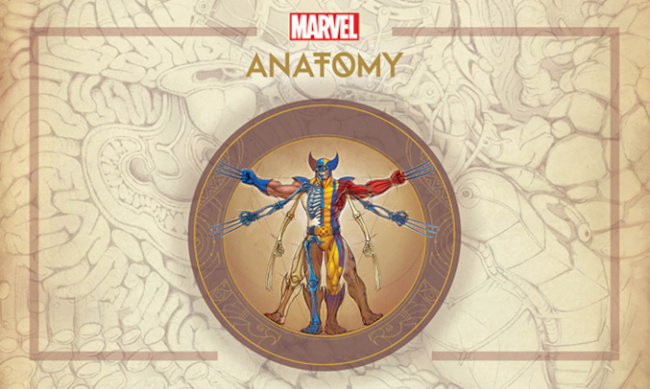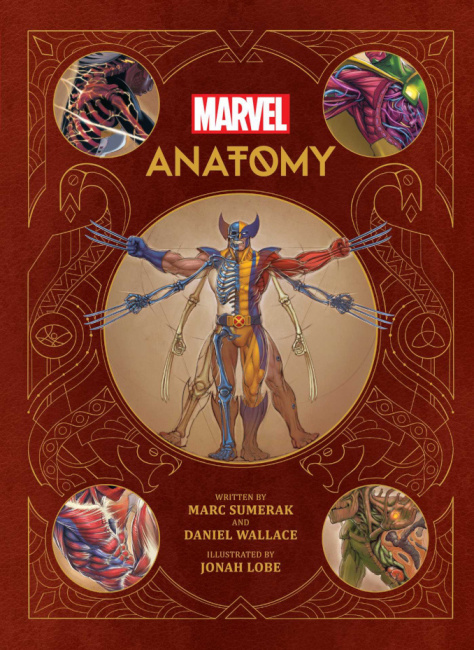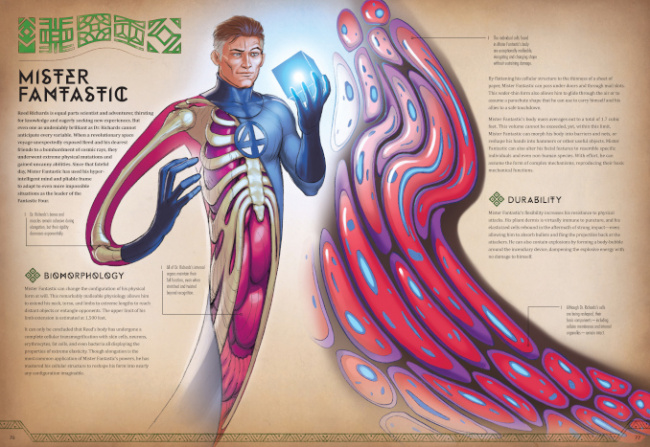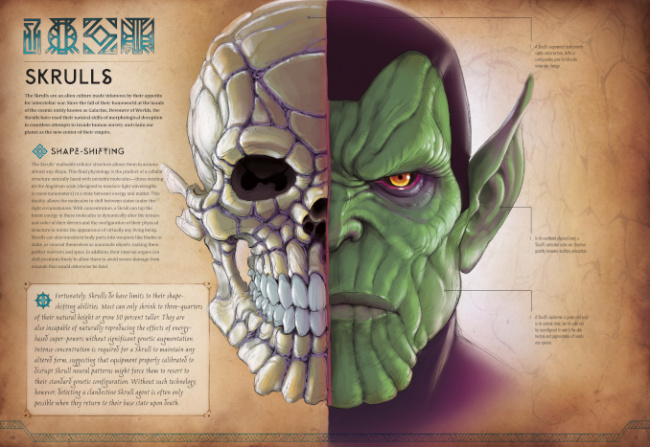I’m Jonah Lobe, a 3D character artist, creature designer, concept artist, and illustrator. I’ve spent the last twenty years making dragons, giants, aliens, mutants, and monsters. But Marvel Anatomy — a 230-page anatomical and physiological compendium of over 60 heroes and villains — is unlike anything I’ve ever worked on.
The sheer originality of the premise pushed my imagination in a hundred directions at once. I’ve wondered what Wolverine’s claws look like when retracted into his arm; I’ve imagined the many tree-like layers of Groot; and I always hoped to see a step-by-step breakdown of Johnny Blaze’s face immolating into Ghost Rider’s grinning visage. With Marvel Anatomy, I got to draw it all. What an incredible challenge: to illustrate a medical-style tome packed with Marvel lore, and illustrate that lore in whatever way I saw fit. What a privilege, and by Odin’s beard, what power!
With great power comes great responsibility so I knew from the beginning that I needed to get this right. Every character in this book — whether it be Thor, Hulk, Jean Grey, Cable, Nightcrawler, Man-Thing or Leader — was someone’s favorite, and it was my responsibility to capture their look and personality in such a way as to honor them in the eyes of their fans.
This level of attention meant going even deeper than what the manuscript called for, so I dove into researching the history, storylines, and iconic aspects of each character. With over 60 heroes and villains spanning hundreds of storylines and artists, we’re talking about months of full-time work. And all that research had to be completed before considering how to illustrate the pertinent anatomical information...
This was an amazing opportunity to delve into the lives of these legendary characters. Who wouldn’t be interested in seeing the Hulk’s exposed musculature, the inner workings of Cyclop’s visor, or the nanites that compose Iron Man’s Extremis armor (which otherwise reside in the hollows of his bones)?
As an independent artist, creative freedom is essential to my workflow; Marvel gave me the flexibility to invent aspects of their universe that have remained previously unexplored.
Jocasta, for instance, has a titanium chassis and distinctive cranial extensions that form a mantle of "hair." To account for this aesthetic, I expanded her silicate brain into the space on either side, and filled the rest of her hair with sensors that I referenced from soviet-era radio equipment.
Inspired by certain action/horror movies of the 90s, I depicted the techno-organic virus — the very same virus that’s consumed half of Cable’s body — under a microscope, and used real-life viruses (which look like the offspring of spiders and hypodermic needles) as a model. This close, I got to show off the maddened whorls and tubes and machinery that composed it, and I even draw a diagram of its lifecycle.
I referenced the color changing "chromatophore" of Octopi to give audiences a look at Mystique’s shape-shifting cells. I studied raccoon and human skeletons to best depict the modifications made to Rocket’s pelvis and collarbones (the ones that allow him to stand upright and carry all those heavy weapons). And I drew a step-by-step diagram detailing the rather violent means by which the Weapon X program bonded adamantium onto Wolverine’s bones, without closing up the microscopic pores that allow those bones to breathe.
There are hundreds of pages in this book, every one of them packed with information, but one aspect of Marvel Anatomy takes it to the next level: the narrator is none other than T’Challa and his sister Shuri.
To realize the vision of an official Wakandan dossier, I worked with Kenyan artist Salim Busuru to populate the book with pan-African design. Borrowing inspiration from traditional art, Salim conceived of original Wakandan masks meant to represent each chapter of the book, such as the Extraterrestrials, the Mutants, the Technological Wonders, and those with Mystical Abilities. His contributions elevate Marvel Anatomy in ways that not even Black Panther himself could anticipate, and I’m confident that audiences everywhere will fall in love with Salim’s work.
I hope this preview piques your interest. Marvel Anatomy: A Scientific Study of the Superhuman comes out on October 25th. Be among the first to get your copy!
Click on Gallery below to see full-sized images.







 View Gallery: 7 Images
View Gallery: 7 Images